
The Best DNA and Ancestry Products Compared
Ancestry.com Guide
- UPDATED July 2024
Evaluate the Authenticity of Ancestry.com: An In-Depth Guide Covering Comprehensive Family Tree Building Features
Advertising Disclosure
Many or all of the companies featured provide compensation to us. These commissions are how we maintain our free service for consumers. Compensation, along with hours of in-depth research, determines where & how companies appear on our site.
PROS
Ancestry.com offers extensive guidance, aiding you in discovering a wealth of information about your relatives. The platform encompasses official databases and records sourced from the federal government, along with comprehensive details about individuals who embarked on immigration journeys from various countries.
CONS
The subscription packages presented by Ancestry.com lean towards the pricier side, particularly when opting for monthly payments. The platform's provision of free resources is relatively limited, often duplicating data available on alternative websites.
BOTTOM LINE
Ancestry.com stands as a prominent figure in the realm of ancestry and genealogical research. Its extensive track record in assisting customers is notable, featuring a collection of records and information that sets it apart from other platforms.
Ancestry.com: One of the Top Names in Genealogy Research
Ancestry.com commands an undeniable presence in the contemporary landscape. In the early 2000s, the company invested millions in an advertising endeavor that showcased the vast potential of genealogical research achievable on its platform. This commitment to visibility endures, with substantial investments in TV commercials and web ads, spotlighting both its comprehensive resources and DNA testing kit. Whether your pursuit involves ordering one of these kits or unearthing your family’s historical origins, Ancestry.com stands as your premier destination. It might indeed serve as the sole resource required to unveil your ancestral lineage, encompassing grandparents and forebears alike.
When delving into your familial heritage and commencing your genealogical journey, certain gaps and roadblocks are expected to arise. Even with the presence of living grandparents, not all pertinent information may be readily available. Ancestry.com’s user-friendly interface streamlines the process of locating individuals, enabling effortless searches by name, yielding a list of corresponding results. Subsequently, discerning which records pertain to the individual of interest and distinguishing them from those linked to similarly named individuals becomes a straightforward task. Our comprehensive Ancestry.com guide will explore the manifold advantages of this platform and how it can serve as an indispensable asset in your research endeavors.
FEATURED GENETICS EXPERT
Best DNA Testing Kits 2024
Brand
Rating
Pros
Cons
Bottom Line
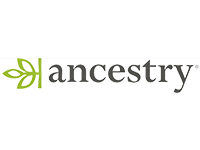
95%
Pros
- Offers solid results at a good price
- Most affordable DNA kit options
Cons
- Requires a subscription to continue using the online family tree feature
Bottomline
- The best DNA kit option for ancestry
- Millions of users and vast information is available
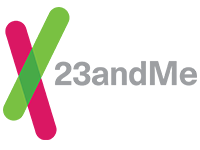
92%
Pros
- Easy-to-read information
- Stores genetic markers and regional results online indefinitely
Cons
- Complete testing of your sample can be relatively expensive
Bottomline
- One of the few home kits that include health screening and genetic marker testing
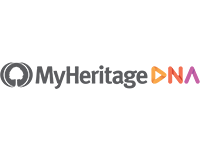
90%
Pros
- Ease of use: simply swab your cheek to provide a sample
Cons
- Add-ons cost an additional fee
- The basic level test provides limited information
Bottomline
- Provides information for over 40 regions
- Great usability features
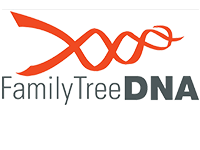
85%
Pros
- User interface is consumer friendly
- Data is easily accessible
Cons
- Does not retain data for an extended period of time
Bottomline
- Beginner-friendly option, suitable for those who prefer doing their research online
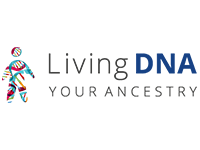
80%
Pros
- Users can compare their own results to a historical database to verify information
Cons
- No feature that connects family members
- Results are most accurate only for British ancestry
Bottomline
- Can deliver strong data for markers relating to the UK
The History of Ancestry.com
The history of Ancestry.com is a captivating journey that spans decades and underscores its evolution into a premier genealogical resource. Founded in 1983 by Paul Brent Allen and Dan Taggart, the company initially began as Infobases, focusing on compiling and distributing Latter-day Saint genealogical information on floppy disks. This early initiative laid the groundwork for what would later become Ancestry.com.
In 1996, Infobases launched Ancestry.com as an online platform, marking a pivotal moment in genealogy research. This shift to the digital realm allowed users to access an ever-expanding database of historical records and family history resources from the comfort of their homes. Over time, Ancestry.com diversified its offerings, amassing an impressive collection of census records, birth and death certificates, military records, immigration documents, and more.
As technology advanced, Ancestry.com continually adapted and innovated. In 2002, it introduced its DNA testing service, allowing users to delve even deeper into their ancestral origins. The company’s DNA database, combined with its historical records, provided a comprehensive toolkit for users to unravel their family history.
By fostering collaborations with genealogical organizations and institutions worldwide, Ancestry.com solidified its reputation as a trusted source for historical information. Its commitment to accuracy and accessibility further propelled its ascent.
Today, Ancestry.com stands as a global leader in genealogy and family history research, boasting an immense database of records, a robust DNA testing service, and collaborative tools that empower individuals to unearth their roots.
The Church of Jesus Christ of the Latter-Day Saints had a close connection to Ancestry.com in the site's early days.

Related Websites
Ancestry.com’s strategic acquisitions have significantly expanded the wealth of records available to its customers. One notable acquisition was the integration of Find A Grave, a platform enabling users to search for and locate graves by name. This acquisition not only provides insights into burial locations for ancestors but also contributes valuable data to family trees. With the addition of a mobile app, Find A Grave enhances user accessibility, offering opportunities to share information and images.
In its early stages, Ancestry.com featured an online newspaper archive, now accessible through the Newspapers.com website. This integration consolidates articles from the previous Archives.com platform, allowing targeted searches based on names, dates, and locations. This amalgamation provides users with access to an extensive repository of articles, facilitating efficient research.
While Ancestry.com owns RootsWeb, it operates independently from the main site. RootsWeb offers complimentary resources, bypassing account creation or subscription fees. It boasts a mailing list that dispenses research tips and user forums fostering valuable interactions. Ancestry.com account holders can further tap into a surname list housing information on over 50,000 last names, streamlining research endeavors.
- Genealogy.com
- MyFamily.com
- Family Origins
- Family Tree Maker
- Ancestry Family Tree
- We’re Related App
- AncestryHealth
How to Sign Up for an Ancestry.com Account
To utilize Ancestry.com’s services, your initial step involves registering for an account. Upon visiting the website, you will spot a prominent button labeled “Free Trial” situated at the page’s apex. By clicking on this button, you will be redirected to a page where you can initiate the trial period, lasting 14 days. The activation process entails clicking a vivid orange button, which then leads you to a new page displaying a synopsis of your order. This summary confirms your access to the free trial and specifies the chosen membership level. Ancestry.com mandates the selection of either a one-month or six-month subscription plan. Additionally, you are required to input your first and last name, along with a valid email address. Refer to the included screenshot of this page for reference.
During the registration procedure, you are also prompted to input your payment information. The platform accepts a wide array of debit and credit cards, in addition to select online payment methods. Before finalizing your submission, you are afforded the opportunity to review your provided details, ensuring their accuracy. Prior to the expiration of your subscription, Ancestry.com will send you an email notification regarding the forthcoming deduction from your account for payment renewal. This communication also presents the option to terminate your membership if desired.
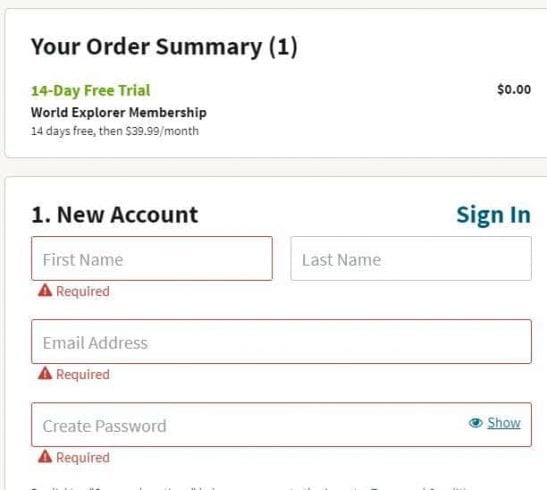
You can view and make changes to your order when you sign up for a free trial.
A basic subscription to Ancestry.com comes with all of the following:
- Ethnicity Estimate
- AncestryDNA Matches
- Contacting Matches
- Comparing to Matches
- Ancestry DNA Traits
Insider Tip
You can cancel your Ancestry.com membership up to two days before your free trial expires. To cancel, you need to call 1-800-ANCESTRY and have your username and password handy.
How to Start with Ancestry.com
In the image below, you can see that there are four ways to start using Ancestry.com:
- Sign up for a free trial
- Become a full member
- Add family
- Buy a DNA kit
Having covered the process of enrolling in a free trial, let’s delve into some of the additional features available. Before transitioning into a full membership, take a moment to explore our section detailing the site’s pricing structure. Upon selecting the “add family” option, you gain access to the functionality of crafting a comprehensive family tree. The platform prompts you to assign a name to the tree, aiding in the organization of both maternal and paternal lineages, as well as any remote relatives you wish to uncover. You retain the flexibility to designate this section as either private or public, affording others who possess identical names in their trees the ability to peruse your information. This dual approach also offers the opportunity to explore their respective family trees, thereby uncovering additional data. In your role as the tree’s creator, you hold the privilege of extending invitations to others, enabling them to view your creation.
Another avenue to explore on the site is AncestryDNA, which introduces the concept of DNA testing through a specialized kit. This process is incredibly straightforward, requiring mere seconds to place an order and submit a sample. Subsequently, the majority of participants receive their test results within a span of six weeks or less. Any pertinent information gleaned from the results summary can be seamlessly incorporated into your existing family tree.
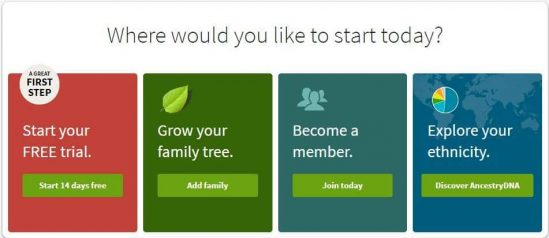
The Ancestry.com start menu makes it easy to select exactly what you want to do with the site.
How Much Does Ancestry.com Cost?
Ancestry.com offers three membership levels:
- US Discovery
- World Explorer
- All Access
The fundamental package offered is the US Discovery option, which carries a monthly charge of $24.99 once your trial period concludes. This package extends access to an extensive collection of over 50 billion records originating from the United States. Included within this package are tools designed to facilitate the creation of family trees and the establishment of connections with other users. For those considering a longer commitment, a six-month subscription at this tier is priced at $99, while an investment of $129 grants an entire year of unimpeded access.
World Explorer members are presented with a monthly fee of $39.99 post-trial expiration. Alternately, a six-month plan can be secured for $149, or a comprehensive year-long service for $299. Within this package, patrons are provided equivalent access to tools and records as offered by the previous tier. Furthermore, it encompasses a repository of over three billion records hailing from diverse countries across the globe.
An additional avenue to explore is the All Access subscription, which mirrors the features of the preceding two levels. In addition, it includes subscriptions to two distinct sites for perusal of newspapers and military records. Ancestry.com extends premium support to members at this echelon, complete with access to an exclusive toll-free helpline. For those opting for this comprehensive package, the monthly fee stands at $49.99, with a six-month commitment priced at $199, and a year-long plan available for $389.
US Discovery
World Explorer
All Access
Family Tree Tools
Forum Access
US Records Access
Worldwide Records
Newspapers.com Access
Fold3.com Access
Premium Customer Support
Who Would Benefit from an Ancestry.com Subscription?
The realization that not everyone possesses as much knowledge about their familial background as they assumed is a common occurrence. Countless narratives abound of individuals undergoing DNA testing, only to unearth revelations about previously unknown siblings or even the existence of undisclosed parents or relatives. It’s entirely possible that discoveries might surface, including instances where aunts, uncles, or grandparents had secret offspring. Through the platform Ancestry.com offers, individuals can embark on a journey to uncover these hidden surprises by engaging in DNA testing. This process empowers users to construct comprehensive family trees that document the lineage of parents, grandparents, and siblings.
Ancestry.com’s services prove particularly beneficial to various demographics, such as:
- Adults who experienced adoption at a tender age and possess limited or no knowledge about their biological birth parents.
- Individuals who experienced the loss of connections with family members and cherished individuals and aspire to reconnect with them.
- Those who faced obstacles while conducting genealogical research on free websites and are seeking a more comprehensive resource.
- People with a desire to explore records both within the United States and across international borders.
- Adults aiming to delve into a specific surname, unraveling deeper insights into their family's history.
For those seeking a centralized online repository to conduct research and seamlessly preserve the uncovered information, Ancestry.com serves as a valuable resource. It provides a convenient and comprehensive platform for conducting genealogical research, aiding in the discovery of hidden familial connections and histories.
Benefits of the Ancestry.com App
- Lets you log into your existing Ancestry.com account
- Helps you make changes on the spot to your family tree
- Gives you access to the same tips you would find on the website
- Has a search function for looking through photos that users shared and lets you leave comments on the images
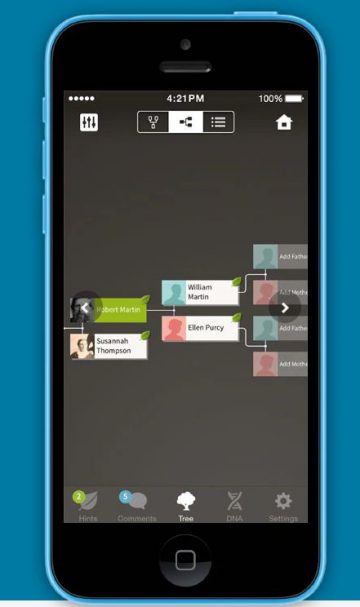
Is Ancestry.com a Scam? Top Reasons to Use the Site
When conducting an online search for Ancestry.com, you might encounter reviews that raise concerns about its legitimacy or stumble upon inquiries regarding its effectiveness. It’s crucial to emphasize that Ancestry.com is indeed a legitimate platform, and we’ve dedicated this section to clarify any doubts. Here, we present a compilation of the notable advantages associated with Ancestry.com and elucidate the reasons behind its widespread adoption by millions of users who are engaged in tracing their familial heritage and constructing family trees. Our findings have unearthed compelling reasons to opt for Ancestry.com.
Distinguished Award-Winning Software
One of the primary motivations to utilize Ancestry.com stems from the accolades garnered by its software. In contrast to other platforms that offer access to family records, Ancestry.com stands out by boasting the largest and most comprehensive repository of records globally. Should you seek information about your grandparents’ marriage date or your grandfather’s immigration details, the platform empowers you to input his name and subsequently peruse an array of records where his name is documented. This comprehensive search allows you to uncover critical data, including birthplace and birth date, marriage details, potential previous marriages, military service history, and even occupation history as indicated by each census.
The breadth of data and the meticulousness of Ancestry.com’s record collection set it apart as a powerful tool for unraveling your family’s history, making it an invaluable resource for anyone undertaking genealogical research.

Between Ancestry.com and the associated app, you can update your family tree and search for relatives anywhere you go.
Tailored Plans for Various Budgets and Needs
For those who are mindful of their budget and prefer not to make an upfront investment of over $100 for a full year of Ancestry.com service, the platform offers flexible alternatives. You can kickstart your journey with a free trial, followed by a one-month membership. By canceling your membership at least two days before your renewal date, you can avoid charges for subsequent months. If you decide to revisit the site at a later time, you can opt for another month of service. Notably, all the information you’ve uploaded and the family tree you’ve crafted will be preserved. Ancestry.com also extends more comprehensive membership tiers, catering to those who desire access to an expanded array of military records and records from various countries.
Automated Hint System
A standout feature that greatly impressed us about Ancestry.com is its automatic hint functionality. This proves invaluable when you introduce individuals to your family tree, yet lack precise information about their birth or death dates, or even their parentage. Should Ancestry.com identify a particular name within its record collection, it will affix a small green leaf symbol to that name on your family tree. A simple click on this marked name reveals a wealth of associated records, enabling you to selectively incorporate available data into the respective branch of your tree. This feature isn’t solely about convenience—it also serves as a tool for verifying potentially uncertain information, contributing to the accuracy of your family history exploration.
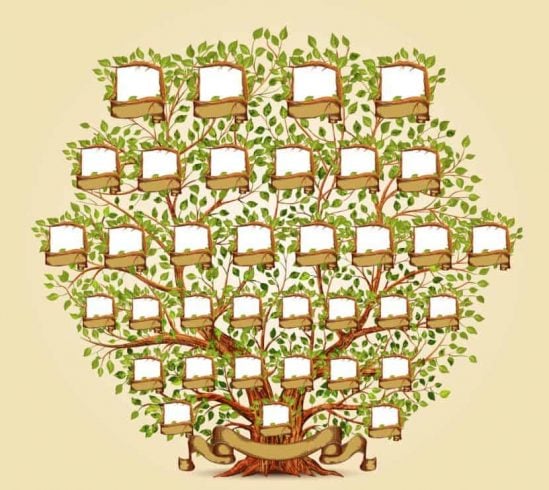
The automatic hints make it easy to find the names worthy of adding to the branches of your family tree.
Rapid Expansion to 40 Billion Records and Beyond
As of the year 2022, Ancestry.com boasts a staggering compilation of over 24 billion records, a remarkable feat considering its origins with only a few million records. This extraordinary growth underscores the platform’s commitment to continuously expanding its collection. Users are granted the flexibility to tailor their searches, delving into records that pertain directly to specific individuals. For instance, census records are accessible, offering insights into the addresses and locations where a loved one resided before relocating to their current community. The extensive archives also encompass millions of birth and death certificates, providing vital information regarding deceased individuals, including details such as the cause and date of death.
Robust Security with Two-Step Verification
During our thorough exploration of Ancestry.com, we personally engaged with the site across both computer and mobile devices. Notably, the platform includes a two-step verification process designed to bolster the security of user information. Upon signing up via a computer, a vital link within the confirmation email verifies both identity and email address. Should a user then switch devices or attempt to log in via a phone, a six-digit verification code is dispatched to their mobile device, which must be entered on the site to gain access. This stringent security measure ensures that unauthorized access to an account is effectively thwarted, safeguarding user data and ensuring account integrity.

With the two-step verification process, Ancestry.com offers extra protection for users.
Comprehensive Family Tree Construction
While Ancestry.com once offered older family tree building software, it now presents an upgraded suite of tools and software for this purpose. Upon engaging the family tree builder feature, you’re prompted to input essential details, such as your full name, birth date, and, if applicable, your maiden name. This initial input populates a compact box, with limbs extending upward and outward. Each of these limbs represents an avenue to add information, whether it’s details about parents, spouse, siblings, or children. Clicking on any of these limbs opens the door to adding further data, expanding each branch of the tree to encompass grandparents, ancestors, and a broader network of extended family members.
Option for DNA Testing
In our comprehensive AncestryDNA guide, detailed insights about the platform’s DNA testing capabilities are presented. While we’ll avoid delving into extensive specifics here, it’s noteworthy that this service stands as a compelling reason to subscribe to Ancestry.com. By undergoing an Ancestry DNA test, you gain access to a breakdown of the ethnic composition found within your sample. For instance, an individual might discover they possess 79% British, Scottish, and Irish heritage, along with 12% German and 2% French lineage. This DNA test proves invaluable for those who seek definitive answers to ancestral origin stories, providing accurate insights within a relatively short timeframe.
Pros of the Ancestry.com DNA Test
- Millions of users already listed in the database
- Option to link your results to your family tree and with other users
- Gives you a list of all users who matched your results with the chance to contact them
- Includes an ethnicity breakdown that shows the percentage of each group found in your sample
- Lets you join groups devoted to specific regions in the world
- Tools for taking your results to the next level

Vast Collection of Historical Records
Ancestry.com’s repository of historical records stands as a testament to its exceptional value. Even if the platform solely focused on offering historical records, it would still be considered one of the premier websites in its field. The assortment of records available is remarkably diverse and includes:
- Military records
- Birth certificates
- Census reports
- Probate records
- Death certificates
- Marriage licenses
The versatility of the platform makes accessing these records straightforward, as Ancestry.com provides various search methods. For instance, if you possess your grandfather’s full name but lack details such as his birthplace or parents’ names, you can initiate a search using his name to uncover pertinent matches. This strategy often yields additional information that you can subsequently harness on the site. Moreover, Ancestry.com offers an option to allow the platform to conduct searches on your behalf, systematically scouring the databases for any corresponding names you input.
Interactive Message Board
Browsing through historical records and tracking down specific names can occasionally pose challenges and prove tiresome, particularly when encountering dead ends. This is where Ancestry.com’s message boards come into play, offering a valuable resource for members. These message boards are organized into specific categories, spanning regions like the United States and Canada. Additionally, categories exist to assist individuals seeking research resources or genealogical software for record management. Within the message boards, users have the option to search for particular names or terms and peruse matching posts, providing a dynamic and interactive avenue for assistance and exploration.
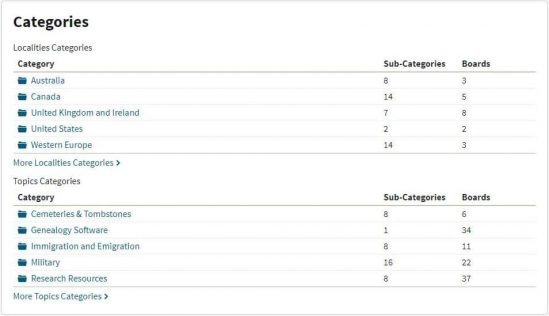
The categories available for the message boards make it easy to find where you want to post.
Is Ancestry.com a Scam? Reasons to Look Elsewhere
It’s important to note that Ancestry.com is not a scam, but there are certain drawbacks and concerns that users have reported. Here are some of the cons that you might want to consider when evaluating whether Ancestry.com is the right choice for you:
Paywalls
Some users have reported encountering situations where they signed up for a subscription plan, but when they tried to access certain records, they were directed to a new page behind an additional paywall. This experience can be frustrating and can undermine the perception of having comprehensive access to available records.
Cancellation Difficulties
Several users have faced challenges when attempting to cancel their free trial memberships. The cancellation process involves making a phone call to a representative, which some individuals find inconvenient. Additionally, the site might try to persuade you to continue your subscription during the cancellation process.
Expensive
Ancestry.com is known for its relatively high subscription costs. While the 14-day free trial is beneficial, it might not provide ample time to complete all desired research. The cost of the subscription plans, especially the longer-term ones, could be a significant consideration for those on a tight budget.
Availability of Records
Some users have noted that Ancestry.com does not offer an extensive collection of certain types of records such as deeds, probate, and land records, which could limit the comprehensiveness of research.
Billing Practices
The site’s billing practices have drawn criticism from users who report being charged for a full month even if they cancel shortly after a new billing cycle begins, even if they don’t use any of the site’s resources during that month.
Confusing Interface
Some users have found the interface of Ancestry.com confusing or not as user-friendly as they expected, which could impact their overall experience.
Gift Memberships
Gift memberships may not always come with the same features as standard plans, potentially limiting the recipient’s experience.
Privacy Concerns
Some users have mentioned that while they have matches on the site, those matches have set their family trees to private, which can hinder collaboration and information sharing.
Notifications and Matches
Users have reported instances where they did not receive notifications before the site charged their credit cards or where certain names brought up unrelated people in search results.
While Ancestry.com provides a wide range of valuable services for genealogical research and connecting with family history, it’s essential to weigh these cons against the benefits to determine if it aligns with your goals and budget.
Tips for Getting More Out of Ancestry.com
Maximizing Your Experience on Ancestry.com:
Utilize New Products
Ancestry.com consistently introduces new products to aid genealogical research. The Social Security claims and applications database, for instance, is a valuable resource for tracing deceased individuals. It allows you to search for names and explore Social Security claim details, aiding in uncovering important life events.
Engage with Message Boards
The extensive record collection on Ancestry.com might not always yield desired results. In such cases, the platform’s message boards can prove invaluable. These forums cater to specific surnames and regions, facilitating collaboration and sharing of information with fellow researchers.
Effective Message Board Use
- Explore forums related to your family names and locations.
- Prioritize newer responses to ensure up-to-date information.
- Identify email addresses of potential distant relatives for future collaboration.
- Provide comprehensive information about your family to receive more relevant assistance.
- Share your email address in posts for direct communication.
Create Individual Profiles
Instead of conglomerating information, establish separate profiles for each relative, including associated family members, immigration details, addresses, and more. This approach streamlines research and enhances organization.
- First and last names
- Associated family members
- Immigration status, including where they came from and when
- Names of family members and surnames from the same location
- Known addresses
Search for Similar Names
Ancestry.com offers a unique feature allowing searches for similar names, useful for uncovering altered surnames due to immigration or other reasons. Characters like asterisks and question marks enhance search accuracy.
Characters You Can Use on Ancestry.com
- Asterisk shows all surnames
- Question mark shows surnames that match one character in your surname
Multiple Family Trees
With any Ancestry.com membership level, you can create multiple family trees. This approach simplifies organization and avoids confusion when dealing with extensive familial connections. Consider using separate trees for different sides of your family or for various generations.
Consider Public Family Trees
Though Ancestry.com gives you the option of keeping your family tree private, it’s helpful to change the status and leave the tree public. This does not mean that anyone searching the web for you or an ancestor can randomly stumble across your family tree. It does mean that members of the site can view your tree and the information that you shared on it. They can then send you a private message and invite you to view their tree, which may help you fill in the missing gaps and branches. If there is data that you don’t want to share, you can always create both a public tree and a private one.
Additional Tips
- Upload photos and headstone images to enrich your family tree.
- Regularly check for new tools and features on the platform.
- Keep your contact information updated for seamless communication.
- Connect your FamilySearch account if you're also using the FamilySearch website associated with the LDS Church.
By incorporating these tips into your use of Ancestry.com, you can optimize your genealogical research, streamline your experience, and enhance your ability to connect with relatives and collaborate with fellow researchers.
Become a Member of Ancestry.com Today
Exploring your historical roots holds significance for a multitude of reasons. Here are some compelling motivations behind delving into your family’s history:
Preserving Lost Information
Over the years, families may lose valuable information about their origins. Exploring your family’s history helps recover these vital details, providing a deeper understanding of your lineage.
Memory Support
For individuals with Alzheimer’s or dementia, remembering names, faces, birthdates, and other family details can be challenging. Genealogical research becomes a means to help them reconnect with their past and maintain a sense of identity.
Discovering Hidden Family Connections
Ancestry.com is particularly valuable for those raised by a single parent or individuals who lack knowledge about one side of their family. The platform aids in uncovering unknown relatives and reconnecting with their histories.
Adopted Individuals
Even those who were adopted can benefit from Ancestry.com. The site provides an avenue to uncover one’s biological lineage and understand their heritage.
The Perception of Ancestry.com as a "Scam" due to Membership Fees
The perception that Ancestry.com might be a scam stems primarily from its relatively high membership fees. Not everyone can afford the costs associated with genealogical research, which can amount to hundreds of dollars annually. It’s essential to consider your financial situation and evaluate whether the benefits align with the costs.
Making the Most of Ancestry.com
To navigate the potential financial constraints, it’s wise to leverage the free trial offered by Ancestry.com. This allows you to explore the platform and gather as much information as possible within the trial period. You might find that a few months of subscription are all you need to achieve your research goals. If you’re financially capable and possess a genuine interest in delving deep into your family’s history, Ancestry.com serves as the ideal platform for your genealogical endeavors.



